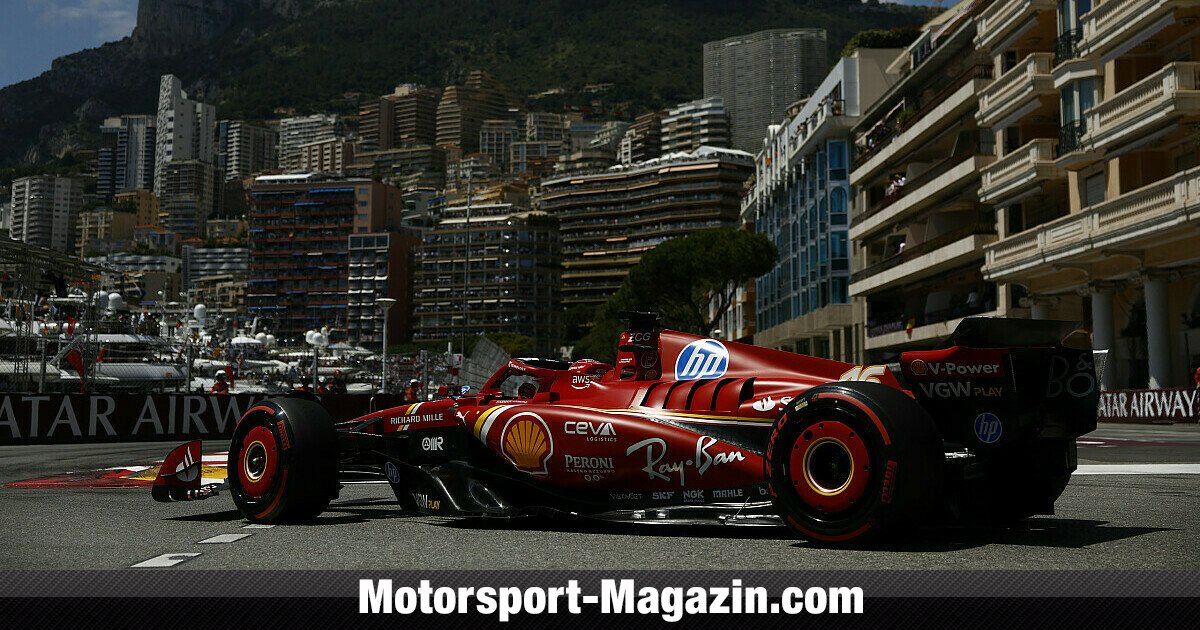Charles Leclerc went into the Formula 1 qualifying in Monaco as the favorite. Contrary to the doom and gloom of many fans, he retained this position and did not have to line up behind Max Verstappen again, who had made it a habit in recent weeks to grab pole position again after strong Fridays from his competitors.
The Red Bull driver will most likely not play a role in the victory in Monaco, because from sixth place, even Verstappen’s almost supernatural abilities are limited. Under normal conditions, at least. Victory will probably go to Charles Leclerc. The Monegasque knows the feeling of taking pole position at his home race – and then not winning the GP.
Charles Leclerc on pole: What can McLaren and Co do?
In 2022, the combination of rainy weather and a suboptimal Ferrari strategy stood in his way, and in 2021 he stood in his way to a certain extent. As a result of his accident in qualifying, he suffered a gearbox failure on the way to the starting grid. He was allowed to keep the pole in his statistics, but that was all he had left from that Grand Prix.
Neither will happen this year. On the one hand, the SF-24 remained intact in qualifying, and on the other hand, the weather forecast for race Sunday clearly indicates dry conditions. However, the race is not a sure-fire success. This is also shown by the pole statistics of recent years. Of the last 8 GPs in the principality, only three were won from first place on the grid.

What could make life difficult for Leclerc is the race pace. Yes, track position is Monaco GP is the deciding factor in most cases, but without good long runs, the task of having to withstand the pressure from behind for 78 laps is a lot more difficult. Leclerc complained on Friday about the Ferrari’s pace in the endurance run. The long run was a “disaster”. Admittedly, he didn’t make the task any easier by braking too late at the start of the run.
Ferrari had a luxury problem on Friday at the Formula 1 in Monaco: Carlos Sainz’s setup had strong long-run pace, but showed weaknesses on one lap, while Leclerc’s was the other way around. When in doubt, you always go for the short run in Monaco, but we will only see over the course of the 78 laps of the race how well Ferrari managed the balancing act between the two setups up until qualifying. The long run of Oscar Piastri, who came second in qualifying, was the second best in the second practice session after Sainz’s.
Start, strategy or damage, how to crack Leclerc?
But how is the McLaren supposed to get past, even if it has the better pace? Perhaps through strategy. In Monaco, that is usually rather monotonous. One stop is practically the only option, especially at the front of the field. Starting on mediums and then changing to hard tires seems to be the preferred way.
A gamble with a start on softs seems possible, but the route to Turn 1 is short and position changes up to that point are a rarity. The last time there was a change of lead at the start was in 2002, otherwise the pole setter always came out of the first bend in Formula 1 races in the city state in position 1. If this unlikely overtaking maneuver at the start does not work, Piastri would then be at a clear disadvantage – not only against Leclerc, but also against the pursuers.
An undercut seems like a good option on paper, but early in the race Leclerc will hardly be interested in spreading the field out so far. If he does, then the undercut door might open later through a favorable gap in the traffic. But the long lifespan of the tires means there is little room for maneuver in this regard.
But of course there are other ways to lose a race. Leclerc was reminded of one of them between FP3 and qualifying. Ferrari recognized a problem with its power unit and quickly replaced it. In doing so, they used a unit that was already in the Monegasque’s pool, but it is unclear which one.
What’s wrong with the Ferrari engine?
In Miami, Ferrari changed the engine on its car for the first time. In Imola, the third engine was installed as a precautionary measure following irregularities during routine checks. However, it was stated that the second engine would be used in training sessions to check its suitability. It is not known whether the faulty engine that was replaced after FP3 is this power unit or whether the Imola engine was still installed and, above all, which one is installed now.
Regardless of which engine it was, the wear and tear on the Maranello team (no other driver apart from Leclerc is already on his third engine) could cause concern and give hope to the competition. From the perspective of McLaren and Co., there is always hope in Formula 1 for a well-timed safety car.
The probability of a race neutralization is high in Monaco, so Ferrari will hardly want to take any risks and stop Leclerc earlier than McLaren. Paradoxically, this could open the narrow gap in the undercut door as the race progresses.
In most cases, however, a safety car would probably play into Leclerc’s hands. A red flag and the associated free tire change would even more so. Because with the hard tires you can practically drive the entire race from lap 1. The fact that he can count on support from the second row with Carlos Sainz is an added bonus. So all in all: Charles Leclerc holds all the trump cards to finally achieve his long-awaited Monaco victory. But we already came to this conclusion in 2021 and 2022…
